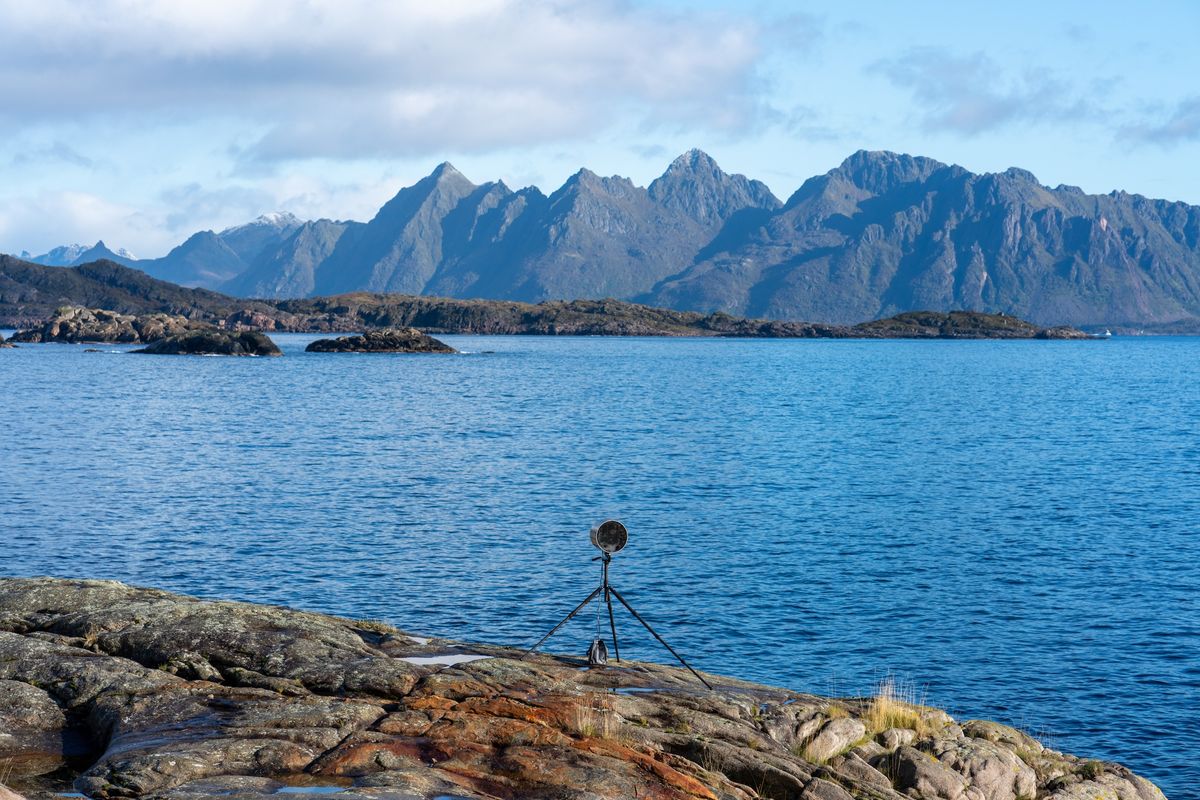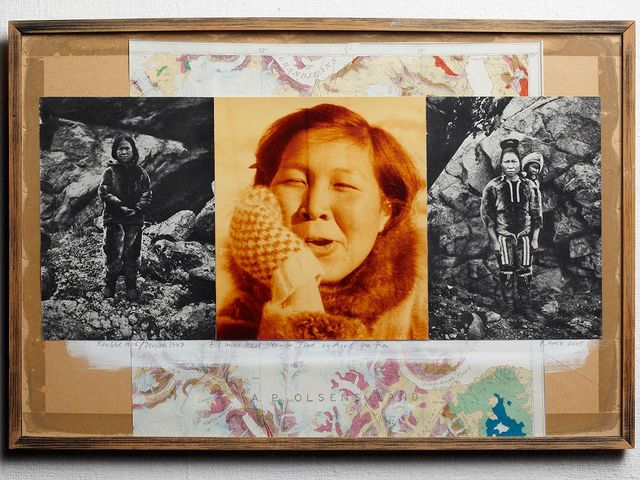There is an endless visual drama to the Norwegian archipelago of Lofoten, which lies just above the Arctic Circle, with its fjords, jagged mountains (the trolls of local legend) and fishing villages with houses painted bright red and giant outdoor racks for drying cod. This is to say nothing of the light—the aurora borealis is often visible on a clear night, and during the day the constantly changing weather creates sudden rainbows and bursting rays of sunlight through dark, fast-moving clouds.
This striking landscape plays host to the longest-running contemporary art biennial in Scandinavia, Lofoten International Art Festival (Liaf), which marks its 18th edition this year (until 20 October) under the curatorial direction of Kjersti Solbakken, who was born in nearby Valnesfjord and is the new director of Bergen Kunsthall as of 1 October. Liaf 2024 finds its centre in the region’s administrative capital of Svolvær (population 4,700), with satellite projects across Norway and as far away as New York City. As a migratory biennial, each edition of Liaf makes use of different available buildings and outdoor spaces across Lofoten. “Just like codfish, it travels between the old fishing villages,” Solbakken writes in her introductory text to the biennial’s guidebook.
Cod (known locally as skrei) is an enormous part of Lofoten’s identity; it even appears on Svolvær’s coat of arms. For more than 1,000 years, locals—and, later, whole fleets of increasingly large fishing boats from across Norway—have been catching the fish as they migrate from the Barents Sea around the Scandinavian Peninsula to spawn in the winter months. The cod are dried on large racks to create stockfish, which has been a major export since at least the Middle Ages, when it was marketed to Catholic countries during Lent. (Portugal’s national dish, Bacalhau, is often made with stockfish from Norway.)

Still from Astrid Ardagh’s On Air (2024) at Kraftholmen Photo: Kjell Ove Storvik, courtesy the Lofoten International Art Festival
The national economic importance of cod-fishing—Lofoten locals like to say that the city of Bergen was built with cod money—combined with the unpredictable weather of the region to create an urgent need for better communication across the islands. As a result, 170km of undersea cables and landlines were laid along what became known as the Lofoten line (Lofotlinjen), funded by the state and completed in 1861. In 1903, Lofoten became the second place in the world (after Italy) to send and receive a wireless telegraph message. Three years later, the Sørvågen Coastal Radio Station began operations in the southernmost part of the archipelago. (The first radio station in Oslo was not created until the 1920s.) In 1914, a telegraph building was completed there, designed by Georgine (Lilla) Hansen (1872-1962), the first female architect in Norway to establish her own practice. The Sørvågen radio building now houses the Museum Nord, one of the satellite venues of Liaf this year.
“Liaf 2024 has not tried to create a theme-based exhibition, but has chosen instead to use Lofoten’s history of telegraphy as a tool to find out how it might be possible to create an international exhibition in the far-flung region of Lofoten’s archipelago,” Solbakken writes. “If you look up at the sky, you may be lucky and see the northern lights—nature’s own radio that also makes a sound. Under the surface of the water, the fish have been communicating with their own Morse-like language through drumming and sonar long before we humans were able to patent teletechnological variants of these techniques.”
Given both Lofoten’s long history of communications and its breathtaking landscape's monopoly on the visual realm, it should come as no surprise that the most memorable projects at Liaf 2024 involve sound.
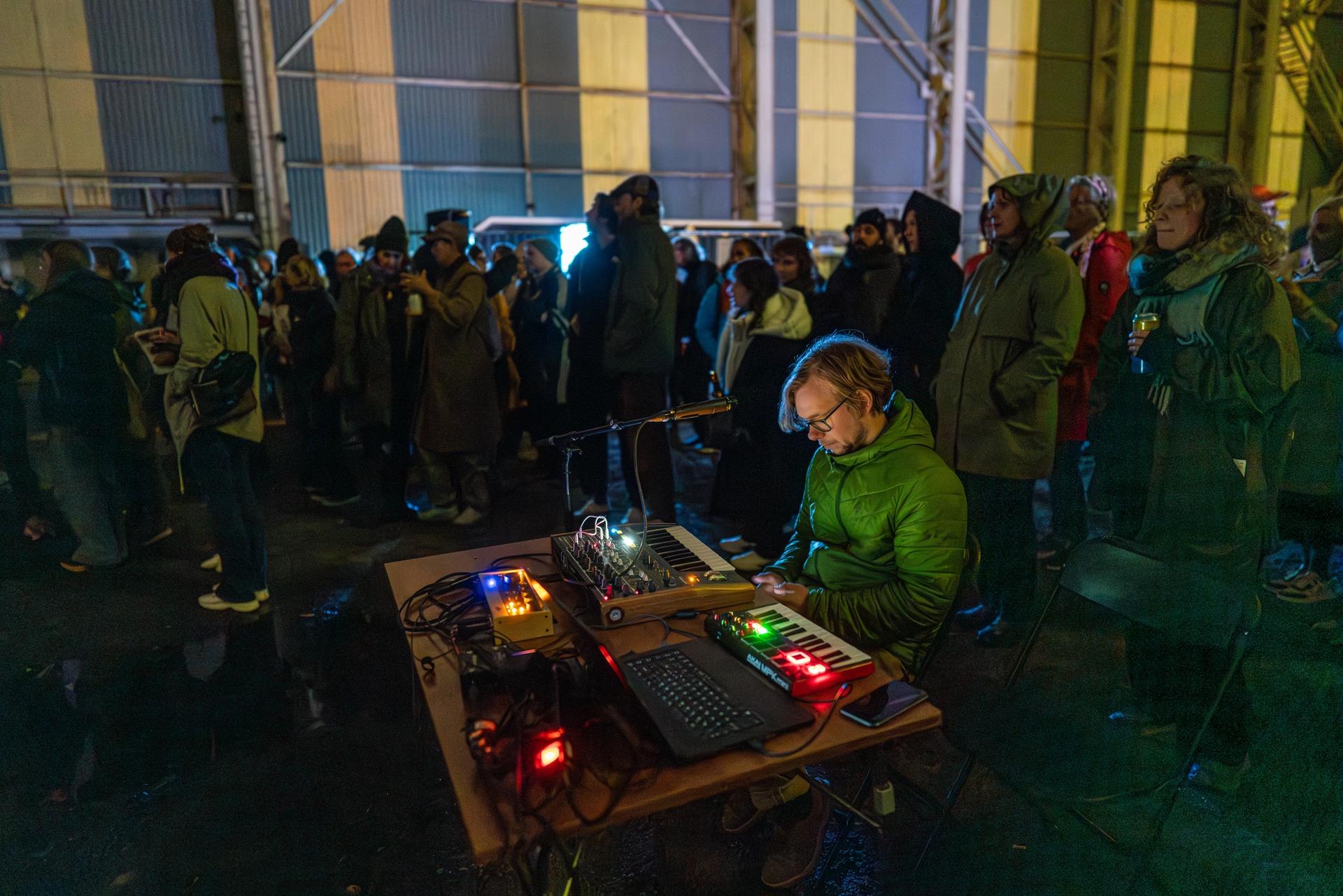
Viktor Bomstad performs during Liaf 2024's opening weekend Photo: Kjell Ove Storvik, courtesy the Lofoten International Art Festival
An international community of dozens of artists gathered for the festival's opening weekend (20-22 September), which kicked off with a parade through the streets of Svolvær, a marching band made up of local children leading the way. Two New York artists brought the art of words with them—Cuthwulf Eileen Myles wrote and read poetry inspired by their experience on the archipelago, while Kameelah Janan Rasheed’s site-specific work in Kraftholmen (a former fishing-industry mechanical workshop) interrogates written language and the elusive desire for full comprehension.
In the space adjacent to Rasheed’s work, a group of artists from Zambia calling themselves the Livingstone Office for Contemporary Art explore the “sonic corridors” between Lofoten and the former capital of Northern Rhodesia. Liaf also includes the works of a number of Sámi artists—the Indigenous peoples of the region—one of whom, Elle-Hánsa/Keviselie/Hans Ragnar Mathisen, is displaying a wide array of woodcuts inside the North Norwegian Art Centre and enthusiastically serenaded a large group of gathered artists, festival organisers, journalists and guests with traditional Sámi music and song at a community dinner on 22 September.
Kraftholmen provides one of the largest venues for Liaf 2024, hosting artists' talks and gatherings throughout the opening weekend as well as artmaking workshops for local children throughout the festival. Tucked into the various corners of the space are some of Liaf’s best video and film works. Astrid Ardagh’s On Air (2024) is a 20-minute documentary about a radio club across Norway’s Arctic islands, with retirees who used to work at the nation’s meteorological stations communicating with one another over ham radio and using Morse code. The group discovers just how vital this old method of communication can be when a Russian cyberattack coinciding with its invasion of Ukraine in February 2022 leads to a two-week internet outage.
Another short film, Elisabeth Brun’s Big Tech Blues (2024), centres on the artist’s hometown of Strengelvåg (northeast of Lofoten) and how residents there reacted to the news that SpaceX had chosen the village’s former school as a site for a Starlink ground station. Ironically, it is a story of communication breakdown within the business of global communications networks. “Central to this exploration is the experience of sound,” reads the project’s description, “the hum of digital technology, the laughter of children and the sounds of weather and nature.” As Brun stated in her artist talk, people in Strengelvåg were particularly concerned that the new SpaceX ground station would “make this sound, this constant sound”. She also specifically thanked Alexander Rishaug, who was responsible for the sound and music in her film.
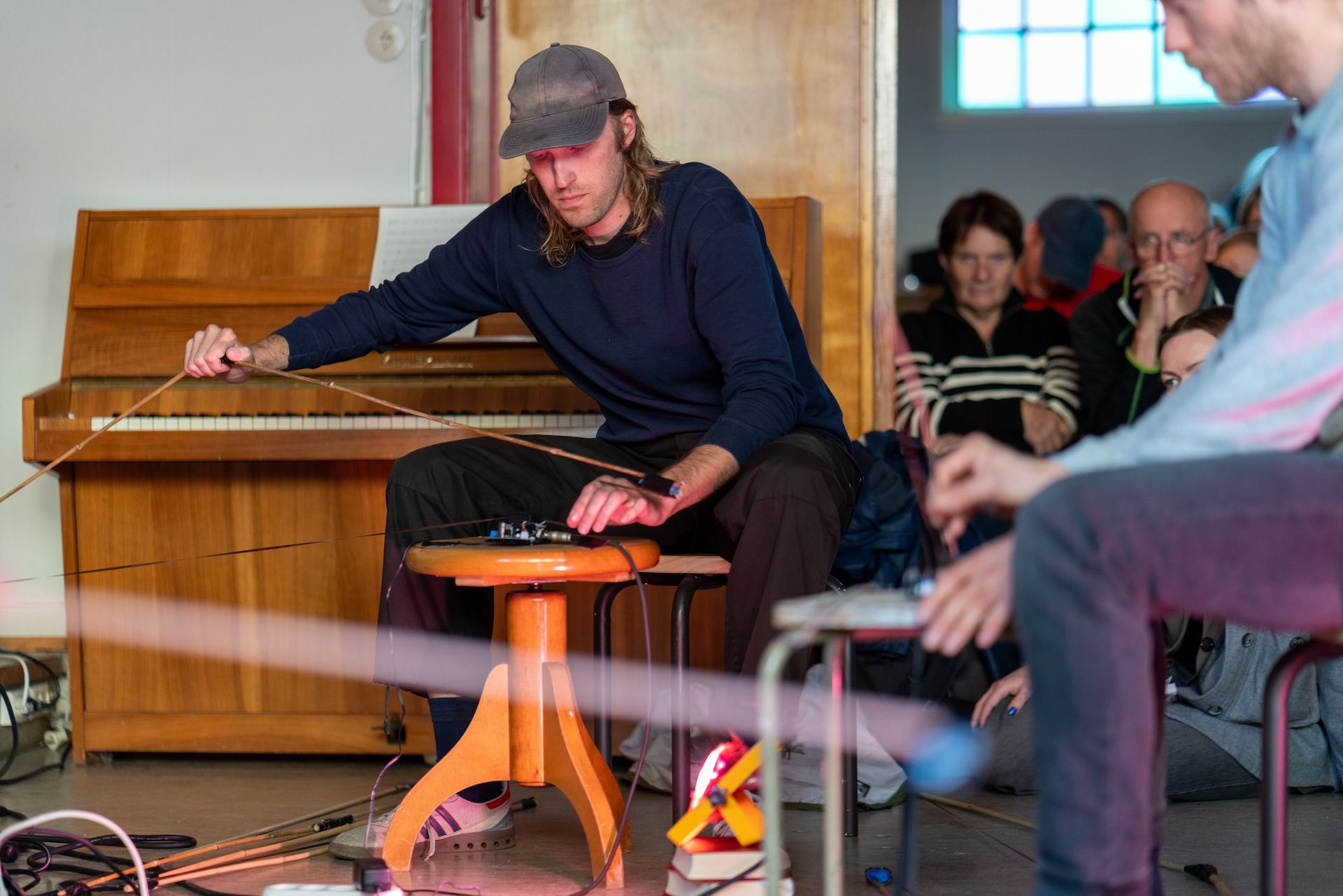
Jonatan Nilsson, a member of Elise Macmillan’s ensemble, playing Surprised Everytime (2024) Photo: Kjell Ove Storvik, courtesy the Lofoten International Art Festival
Musical performances, more formalised than marching bands and impromptu songs, were also a big part of the opening weekend programme at Liaf. The launch party, inside a building formerly used for boat maintenance, kicked off with an audiovisual performance by Viktor Bomstad and Magnus Holmen concerning myths and historical depictions of the Sámi. The following afternoon, the musician Elise Macmillan—who was born in California but moved to Norway in 2015 to play the Hardanger Fiddle—gathered a few other performers for a unique production in Svolvær’s Old Methodist Church. While her collaborators played bowed instruments specially made using the magnetic tape from old cassette tapes, Macmillan, armed with a quiver full of homemade bows of all kinds, took turns playing her own magnetic-tape instrument and a violin. The 40-minute piece, Surprised Everytime (2024), variously evoked gusts of wind, the beeping of Morse code, radio static and other sounds of the region—perhaps even the aurora borealis? (Both Bomstad and Macmillan will bring their sound pieces across the Atlantic to The Kitchen in New York for the satellite exhibition Lines of Distribution, which opens on 21 November. Rasheed’s work will also be on display, as will a piece by Wong Kit Yi.)
The most ambitious project of Liaf 2024 sought to transform one of Lofoten’s smaller islands into a musical instrument. Island Eye Island Ear (IEIE, 1974-2024) is a project 50 years in the making, originally devised by the late experimental musician David Tudor (1926-96)—a pianist and organist who was perhaps most famous for premiering John Cage’s 4′33″ (1952), in which the musician takes to and sits on the stage for the allotted time without making a sound so that the “music” is created by the ambient noise of the audience. Tudor conceived of his island project in collaboration with the artists Fujiko Nakaya and Jackie Matisse, the dancer and choreographer Margaretha Åsberg and Billy Klüver and Julie Martin of the art and science collective Experiments in Art and Technology (EAT)—founded with Robert Rauschenberg and Robert Whitman in 1966.
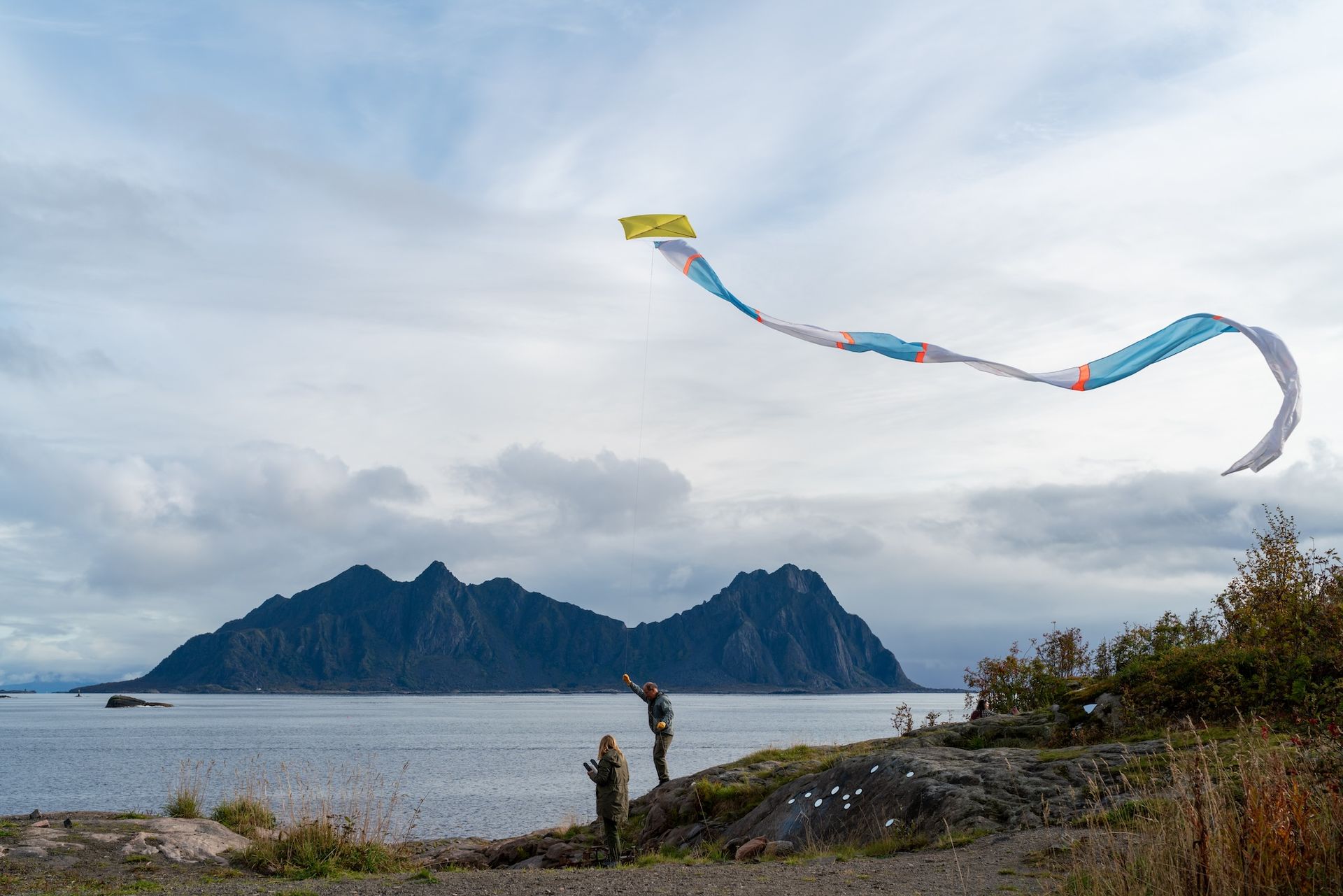
Island Eye Island Ear (1974-2024) performed on the island of Svinøya Photo: Kjell Ove Storvik, courtesy the Lofoten International Art Festival
Although IEIE had been “rehearsed” several times over the years, Tudor died before it could be presented in full and to his satisfaction. Liaf 2024 had the distinction of premiering the project with help from some of its original team as well as younger artists led by the scholar You Nakai, who wrote a book about Tudor. IEIE took place on the island of Svinøya, where adventurous visitors can still crawl into long-abandoned bunkers from the Second World War. During the opening weekend, IEIE presented small bits of mirrors placed all around to reflect the landscape in novel ways, kites with long tails designed by Matisse flown overhead ("painting" with help from the wind) and the all-important sound element—field recordings of the island made over the past year and played through speakers, melding the sounds of all of the island’s seasons into one, poetically collapsing both time and space.
As Liaf 2024’s opening weekend came to an end and everyone gathered for dinner and a spontaneous performance of traditional Sámi tunes, the clouds moved swiftly across the sky and through the giant troll mountains as the waves splashed gently against the shore. It was too cloudy to see the northern lights, but they were up there somewhere, emitting their ever-so-subtle rustle over the radio waves.
- Lofoten International Art Festival, Svolvær, Norway, until 20 October
- Lines of Distribution, The Kitchen, New York, 21 November-18 January 2025


